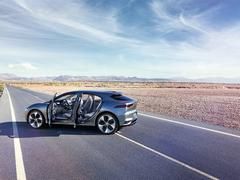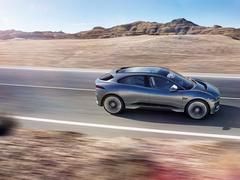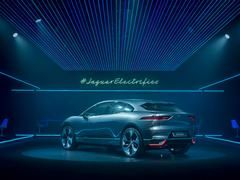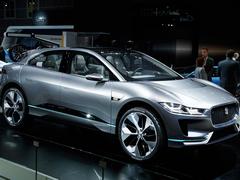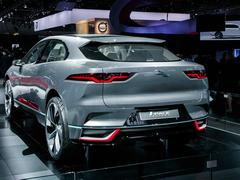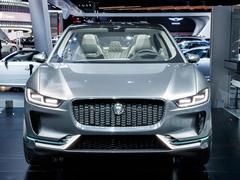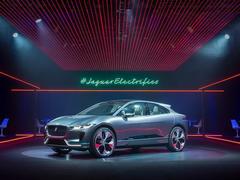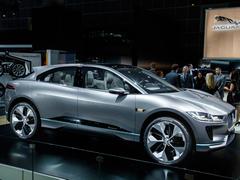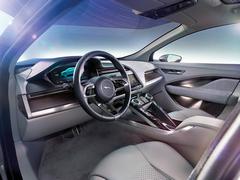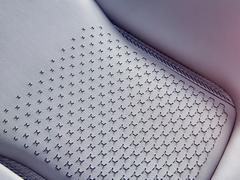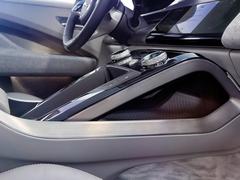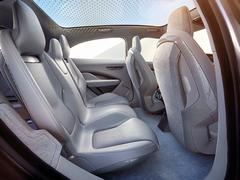Jaguar I-Pace heralds electric future (updated)
This I-Pace concept previews the electric Jaguar crossover you'll be able to buy in just two years (new pics added!)
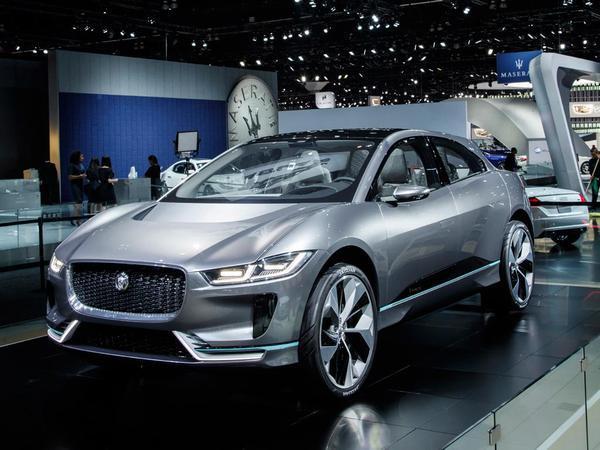
Given the car will be seen in production ready form next year and on sale in 2018 it's clear for Jaguar the tipping point was, in fact, some time ago and it's been hard at work on both the mechanical underpinnings and how the car will look. It's only telling us about it now.
Where to start then? Let's go with the styling. For all the worries about Jaguar entering the SUV realm when its heritage has been about saloons and sports cars - and its partner brand already dominates the field - the F-Pace has been a huge sales success. Little surprise the I-Pace follows broadly the same format then, seemingly crossover in its raised stance and F-Pace style proportions but actually rather more radical than you'd guess from first glance.
It's (give or take) 90mm lower than an F-Pace for starters, 50mm shorter overall and 40mm narrower. But its wheelbase is 30mm longer than an XF, the all new and dedicated electric platform offering huge scope for improved interior space and packaging. Design boss Ian Callum describes it as a challenge but an inspiring one, the I-Pace adopting a noticeable cab-forward profile somewhat at odds with Jaguar tradition. The face is familiar though, likewise the F-Type inspired rear lights. These use a new 'chicane' design that will roll out across the Jaguar range in due course. In Jaguar fashion it's a very 'clean' design, sculptural shapes and the signature raised haunches combined with functional aero features like the bluff tail and vertical side blades that contribute to an impressive 0.29 drag coefficient. Another significant figure is a centre of gravity 120mm lower than an F-Pace; that with the longer wheelbase and centred weight distribution should help the handling too.
Easy enough to build a stylish looking show concept of course. Rather more involved taking the first corporate steps away from internal combustion power and into the electric era. But the 'skateboard' platform underpinning the I-Pace is an entirely rational - and scaleable - system that could be used in a number of different ways. At its heart is an underfloor 90kWh battery pack contained within a structural floorpan off which front and rear electric/motors and suspension subframes are hung. Cooling systems are incorporated into the frame to maintain peak operating temperatures for the batteries; likewise a heating system keeps the batteries efficient even in cold weather.
Performance claims are impressive and, given how close it is to production reality, have to be taken seriously. The two motors generate a combined 400hp and 516lb ft of torque, which is good enough for a four-second 0-60 sprint. Range is, of course, as much a talking point and here Jaguar is claiming over 300 miles by the NEDC Combined test with a 90-minute charging time to 80 per cent battery power via a 50kw DC charger. The system is ready to accept more powerful chargers with corresponding reductions in this, as and when the infrastructure is in place. If not as 'ludicrously' fast as a Model X the Jaguar's range is, at least, on a par with the Tesla SUV's 257-mile EPA figure.
The motors themselves are 'rare earth' permanent magnet types with a concentric gearbox meaning the driveshaft passes directly through motor and single-speed transmission. This helps packaging and saves a bit of weight, the design of the motors themselves saving a more significant amount and coming in at round 35kg each, or about half that of an equivalent induction motor. This and a marginal improvement in efficiency seemingly make the increased production cost worth bearing, the motors built to Jaguar's own design, as is the 'pouch cell' lithium-ion battery pack.
Speaking of cost it's too early to talk about pricing at this stage, though we were told to pitch an I-Pace at around 10-15 per cent over and above the cost of an equivalent F-Pace. So not cheap. But, as Tesla gears up to address the mainstream with its Model 3, probably sensible positioning for a premium product of this type.
Regards,
MyCC.
Gassing Station | General Gassing | Top of Page | What's New | My Stuff

